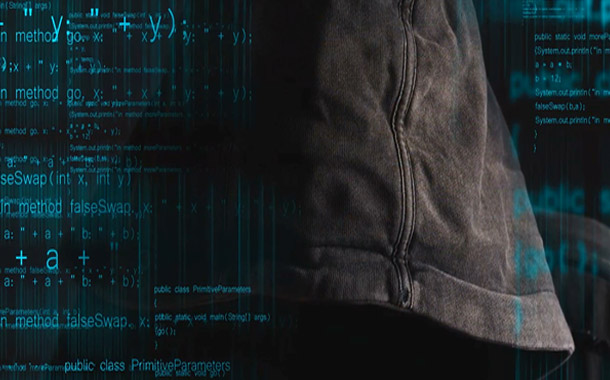As per Cisco 2017 Midyear Cybersecurity Report key industries need to improve security posture as information technology and operational technology converge
The Cisco2017 Midyear Cybersecurity Report (MCR) uncovers the rapid evolution of threats and the increasing magnitude of attacks and forecasts potential “destruction of service” (DeOS) attacks. These could eliminate organizations’ backups and safety nets, required to restore systems and data after an attack. Also, with the advent of the Internet of Things (IoT), key industries are bringing more operations online, increasing attack surfaces and the potential scale and impact of these threats.
Recent cyber incidents such as WannaCry and Nyetya show the rapid spread and wide impact of attacks that look like traditional ransomware but are much more destructive. These events foreshadow what Cisco is calling the destruction of service attacks, which can be far more damaging, leaving businesses with no way to recover.
The Internet of Things continues to offer new opportunities for cyber criminals, and its security weaknesses, ripe for exploitation, will play a central role in enabling these campaigns with escalating impact. Recent IoT botnet activity already suggests that some attackers may be laying the foundation for a wide-reaching, high-impact cyber-threat event that could potentially disrupt the Internet itself.
Measuring effectiveness of security practices in the face of these attacks is critical. Cisco tracks progress in reducing “time to detection” (TTD), the window of time between a compromise and the detection of a threat. Faster time to detection is critical to constrain attackers’ operational space and minimize damage from intrusions. Since November 2015, Cisco decreased its median time-to-detection (TTD) from just over 39 hours to about 3.5 hours for the period from November 2016 to May 2017. This figure is based on opt-in telemetry gathered from Cisco security products deployed worldwide.
Cisco security researchers watched the evolution of malware during the first half of 2017 and identified shifts in how adversaries are tailoring their delivery, obfuscation and evasion techniques. Specifically, Cisco saw they increasingly require victims to activate threats by clicking on links or opening files. They are developing fileless malware that lives in memory and is harder to detect or investigate as it is wiped out when a device restarts. Finally, adversaries are relying on anonymized and decentralized infrastructure, such as a Tor proxy service, to obscure command and control activities.
While Cisco has seen a striking decline in exploit kits, other traditional attacks are seeing a resurgence:
- No more than two-thirds of organizations are investigating security alerts. In certain industries (such as healthcare and transportation), this number is closer to 50 percent.
- Even in the most responsive industries (such as finance and healthcare), businesses are mitigating less than 50 percent of attacks they know are legitimate.
- Breaches are a wake-up call. Across most industries, breaches drove at least modest security improvements in at least 90 percent of organizations. Some industries (such as transportation) are less responsive, falling just above 80 percent.
Cisco’s Advice for Organizations
To combat today’s increasingly sophisticated attackers, organizations must take a proactive stance in their protection efforts. Cisco Security advises:
- Keeping infrastructure and applications up to date, so that attackers can’t exploit publicly known weaknesses
- Battle complexity through an integrated defense. Limit siloed investments.
- Engage executive leadership early to ensure complete understanding of risks, rewards and budgetary constraints.
- Establish clear metrics. Use them to validate and improve security practices.
- Examine employee security training with role-based training versus one-size-fits-all.
- Balance defense with an active response. Don’t “set and forget” security controls or processes.
For the 2017 MCR, a diverse group of 10 security technology partners were invited to share data from which to jointly draw threat landscape conclusions. Partners that contributed to the report include Anomali, Flashpoint, Lumeta, Qualys, Radware, Rapid7, RSA, SAINT Corporation, ThreatConnect, and TrapX. Cisco’s security technology partner ecosystem is a key component of the company’s vision to bring security that is simple, open and automated to customers.
Steve Martino, Vice President, and Chief Information Security Officer, Cisco said, “As recent incidents like WannaCry and Nyetya illustrate, our adversaries are becoming more and more creative in how they architect their attacks. While the majority of organizations took steps to improve security following a breach, businesses across industries are in a constant race against the attackers. Security effectiveness starts with closing the obvious gaps and making security a business priority.”
David Ulevitch, Senior Vice President, and General Manager, Security Business Group, Cisco said, “Complexity continues to hinder many organization’s security efforts. It’s obvious that the years of investing in point products that can’t integrate is creating huge opportunities for attackers who can easily identify overlooked vulnerabilities or gaps in security efforts. To effectively reduce Time to Detection and limit the impact of an attack, the industry must move to a more integrated, architectural approach that increases visibility and manageability, empowering security teams to close gaps.”




